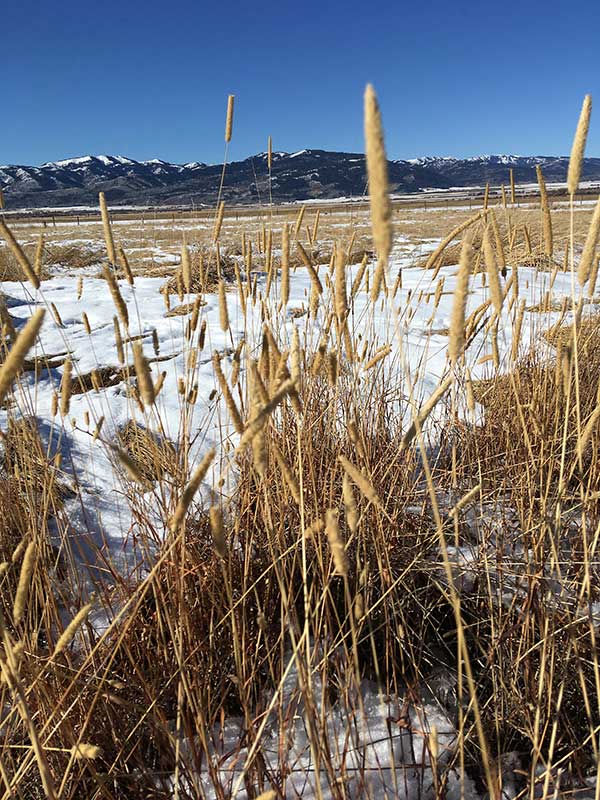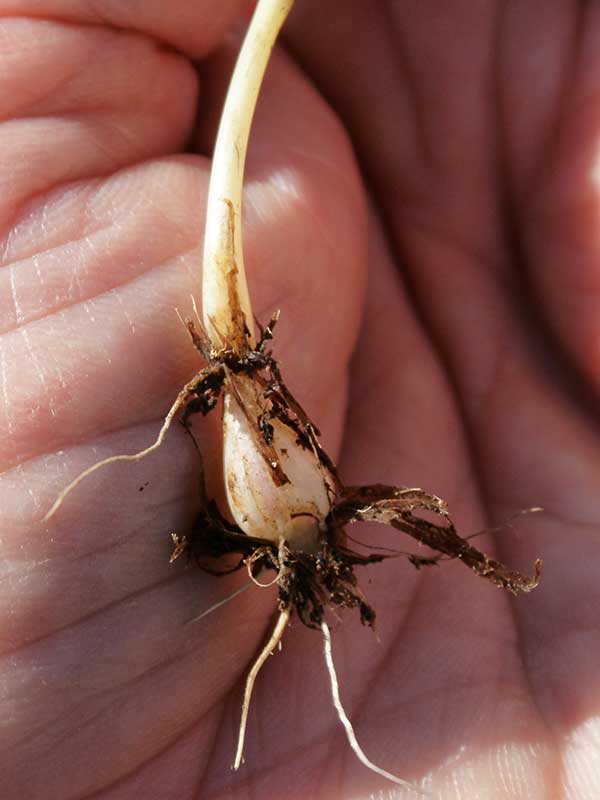Phleum pratense / timothy
- tight, cylindrical flower head
- probably the most recognizable grass in the Valley
- pink stamens with prodigious pollen production in summer
- bulb at base of stem; brown leaf sheath bases
Also known as: timothy-grass, meadow cat’s tail, common cat’s tail
Note: grasses have a nomenclature all their own, much different from that of dicots. A good resource/slide show from the University of Idaho on grass structures is available here.
Timothy is a cool season, perennial bunchgrass native to the cooler parts of Europe. It was introduced to North America accidentally sometime before 1711 when it was first described. Its common name is due to a farmer, Timothy Hanson, who began to push its use for hay making in about 1720, all up and down east coast.
Timothy can grow up to 5 feet tall. Its leaves are hairless and rolled rather than folded. The lower leaf sheaths, just above the base, turn dark brown as they age. Pull back the blade to the stem (culm) and you’ll see a short, ragged ligule. The sheath itself has a distinct “V” at the front and by the ligule, a narrow band of white edging. The nodes are smooth, not swollen, and the culm is erect, unbranched and hairless, albeit rough up near the floral spike.
You will, however, almost never need those characteristics to identify this grass because it has a very long blooming season and holds the flower heads over winter.
Flower heads are up to 6 inches long with densely packed, florets, although seeing the individual florets might require a hand lens. These heads are highly recognizable (see the gallery photos) and require very little by way of “search image” to be seen. Technically, the spikelets are twin hornlike projections arranged in cylindrical panicles. Although a panicle is actually a branched inflorescence, in timothy, the branches are very short and hard to see.
The pink stamens of timothy extend well beyond the florets, and produce prodigious amounts of pollen. Bang a flower head gently and you’ll see a cloud of it. Unfortunately, this pollen is a plentiful and common allergen, but this is often overlooked. Rather, people seem happier to blame the white, fluffy seeds of poplar and aspen… which are not allergenic (despite the annual complaints to the contrary on the Facebook community page). Timothy flowers for most of the summer, so hay-fever season is long.
Timothy is both drought and cold resistant and can grow in upland, sandy and poor, degraded soils… as in areas cleared for housing developments. Of course, like most plants there, it definitely grows better in well-drained soils with high nutrient levels.
Interesting bits – There is another species of Phleum that may be found in the area, but it has significantly shorter flower heads. In addition, P. pratense has a bulbous base (a corm, formed annually) with brown basal leaf sheaths. P. alpinum has neither.
Although lots of animals and birds eat timothy, it is best known as a primo hay for horses.
| Color | |
|---|---|
| Family | |
| Inflorescence size | |
| Inflorescence type | |
| When? | |
| Where? |





